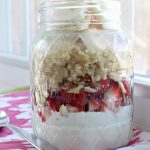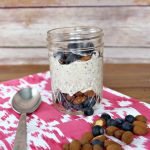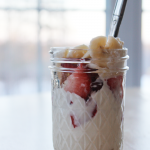Have you ever wondered how a simple cup of matcha could transform your morning routine?
Imagine starting your day with a vibrant green drink that not only energizes but also brings a sense of calm. Matcha is more than just a trendy beverage-it’s a ritual steeped in centuries of tradition.
Adding matcha to your breakfast is a way to create balance and focus for the day ahead. Ready to experience the soothing effects of matcha? Let’s dive into the art of this green wonder and discover how it can enhance your mornings!
Chawan (Tea Bowl) Method
The Chawan method is a timeless way to prepare matcha, focusing on the simple elegance of a tea bowl. To begin, sift your organic matcha powder into a deep bowl. Add a small amount of hot water and gently whisk it with a bamboo whisk in a “W” motion.
This helps break down any clumps and creates a smooth, frothy texture. The result is a thick, rich cup of matcha, full of flavor and energy. The deep bowl allows the matcha to be stirred fully, preserving its smoothness and aroma.
This method not only offers a satisfying, full-bodied experience but also brings a sense of calm and mindfulness to your morning routine, especially when using organic matcha for the best quality.
Chasen (Bamboo Whisk) Technique
The Chasen technique is a vital step in preparing matcha, bringing out the full potential of the tea. Begin by adding matcha powder to your bowl and pour in a small amount of hot water. Using the bamboo whisk, gently whisk the matcha in a “W” shape to break down the powder and create a frothy texture. This method ensures the matcha blends smoothly, resulting in a vibrant, silky drink.
The rhythmic motion of whisking encourages mindfulness, making it a calming ritual to start your day. As you enjoy the smooth cup of matcha, the peaceful process of preparing it can provide more than just energy-it offers a sense of peace of mind to carry with you throughout your morning.
Usucha (Thin Tea) Style
Usucha, or thin tea, is a lighter version of matcha that brings a gentle touch of flavor to your morning. To prepare, whisk a small amount of matcha powder with a larger volume of hot water. This results in a frothy, smooth tea that’s easy to sip and enjoy.
Usucha is less intense than other methods, making it perfect for those who prefer a milder matcha experience. The delicate balance of matcha and water creates a refreshing drink that still provides the calming effects of matcha without being overwhelming.
This style encourages a mindful moment in the morning, offering a sense of clarity and focus that can help you feel centered as you begin your day.
Koicha (Thick Tea) Method
Koicha, or thick tea, offers a rich and intense matcha experience, ideal for those who appreciate a deep, robust flavor. To prepare, use a larger amount of matcha powder and only a small amount of hot water.
The result is a syrupy, concentrated tea that is full-bodied and full of umami. Whisk the matcha slowly with a bamboo whisk to blend it thoroughly, ensuring a smooth, velvety texture.
This method is often used in traditional Japanese tea ceremonies, emphasizing the focus and attention to detail required. Koicha creates a profound connection with the ritual, allowing for a powerful moment of calm and reflection as you savor the thick, creamy tea.
Matcha Latte
A matcha latte blends the soothing qualities of matcha with the creamy richness of milk, creating a comforting and energizing drink. To prepare, whisk matcha powder with a small amount of hot water to form a smooth paste.
Then, steam your choice of milk or milk alternative and pour it over the matcha paste. The result is a velvety drink that balances the earthy flavor of matcha with the smoothness of milk.
The matcha latte is a popular choice for those who enjoy a gentler flavor profile, while still receiving the natural boost from matcha. This drink offers a calm start to the day, ideal for those who want to embrace both flavor and focus.
Matcha Smoothie
A matcha smoothie is a great way to add energy to your morning. It mixes matcha powder with fruits like bananas or berries and a little yogurt or plant milk. Blend it all together, and you get a smooth, creamy drink.
Matcha gives the smoothie a deep flavor that mixes well with the sweetness of the fruit. This easy drink is full of vitamins and healthy ingredients, making it a quick and tasty choice for breakfast.
The best part is how simple it is to make, giving you a boost of energy and a healthy start to your day. It’s a refreshing way to enjoy matcha while getting your fruit in!
Matcha Oatmeal
Matcha oatmeal is a warm and comforting way to start your day with a boost of energy. To make it, simply cook your oatmeal as usual and stir in a teaspoon of matcha powder before serving.
The matcha adds a pop of color and a rich, earthy flavor to the creamy oats. You can top your oatmeal with fresh fruits, nuts, or a drizzle of honey for added taste and texture.
This simple combination brings together the health benefits of matcha with the fiber and nutrients of oats, making it a nutritious and satisfying breakfast. Matcha oatmeal is a great way to enjoy matcha while keeping your morning routine cozy and wholesome.
Matcha Pancakes or Waffles
Matcha pancakes or waffles add a fun twist to your breakfast routine. Simply mix matcha powder into your pancake or waffle batter for a vibrant green color and earthy flavor. Top with fresh fruit, syrup, or whipped cream for extra sweetness. This delicious combination gives you the perfect balance of fluffy texture and matcha’s natural energy, making your breakfast both tasty and satisfying.
Embrace the Calm: Make Matcha a Morning Ritual
Incorporating matcha into your breakfast is more than just a trend; it’s a calming, nourishing way to start your day. Whether you choose the traditional Chawan method or add matcha to smoothies, oatmeal, or waffles, this vibrant green tea offers a refreshing boost of energy and focus. By making matcha a part of your morning ritual, you’ll experience both its health benefits and the peaceful moment it brings, setting the tone for a balanced day.
Did you find this article helpful? You can check out our website for more awesome content like this.






Leave a Reply